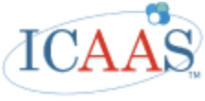アミノ酸アセスメント・ワークショップ
(Amino Acid Assessment Workshop, AAAW)
第10回AAAW 2019年11月19-20日、東京
On November 19-20, ICAAS organized in Tokyo (Japan) a major scientific workshop (10th Amino Acid Assessment Workshop). We welcomed more than 60 academic experts with an aim to discuss clinical data on safety of three amino acids: histidine, lysine and methionine. In addition, the final session of the Workshop was devoted to emerging science approaches. The Proceedings of the Workshop will be published later this year in J. Nutrition – a major peer-reviewed scientific Journal.
Based on research topics presented during the 10th AAAW, the ICAAS Scientific Advisory Committee proposed the following maximum limits for supplemental amino acids in humans: methionine at app. 3.2 g/day, histidine at 8.0 g/day and lysine at 6.0 g/day. These NOAELs are applicable only to high-purity amino acids and they indicate that there is a ubstantial safety margin for the investigated amino acids.
As ICAAS has indicated in the last decade, the main determinant of safety of ingredients such as amino acids, is their purity and quality.
第9回AAAW 2015年10月15-16日、パリ
Thu, 2015-10-15 – Fri, 2015-10-16
Paris, FRA
On October 15-16, 2015; ICAAS sponsored the 9th Amino Acid Assessment Workshop (AAAW). Similarly to all previous AAAWs, the 9th installation of the event was constructed and supervised by the ICAAS Scientific Academic Committee, currently made of Profs. Denny Bier (Huston), Luc Conober (Paris), M. Kadowaki (Niigata), Sid Morris (Pittsburgh) and R. Elango (Vancouver).
The event was organized at the “L’Hotel du Collectionneur” (Paris, France) and as many as 76 leading scientists participated. Day 1 morning session was focused on animal and human data relevant to the safety of the semi-essential amino acid arginine. Presentations and discussions were emphasizing the outcome of ICAAS-sponsored research projects and on the use of new data to determine the upper level of the safe intake (UL) of arginine. General discussion indicated that arginine could be added to normal diet, which by itself contains 3-5 grams of arginine, during prolonged time periods (as long as 3 months) at a very high level (30 gram per day) without any noticeable negative effects. Even if a safety factor of “2” was applied, the presented data would still provide a huge safety margin (15 gram of arginine added to normal intake per day). Considering broad uses of this amino acid, the Workshop provided a very important safety “backbone” for the current and future practical applications.
Afternoon session of Day 1 was focused on the essential amino acid tryptophan which is often used in supplements to improve sleep and modulate mood. The reviews of medical and nutritional literature, as well as the summary of the ICAAS-sponsored clinical study supported UL for tryptophan at 5.0 grams per day when added to normal diet which already contains approximately 0.8 grams of tryptophan per day.
Day 2 was dedicated to safety of high doses of essential amino acid leucine in elderly humans. Leucine stimulates muscle protein synthesis, and thus leucine supplementation to normal diet prevents age related muscle atrophy (sarcopenia). Discussion during the 9th AAAW was centered on new clinical work with elderly humans who were studied using the same techniques as previously applied to young adults www.ncbi.nlm.nih.gov/pubmed/23077191. The comparison revealed that there was minimal age-differences in UL for leucine (all dietary sources summarized) and that the UL for elderly could be established at > 430 mg per kg body weight per day (app. 30 grams per a 70 kg individual).
Considering that due to technological and taste limitations, free amino acids cannot be easily added to foods or dietary supplements at the above doses, the 9th AAAW confirmed a very high technological margin for key semi-essential and essential amino acids and showed that establishing ULs for those substances is not a regulatory priority.
Finally, presentations made during the 9th AAAW as well as a summary of the Workshop similar to this one, will be published in a reputed scientific journal (J. Nutrition) within several months to serve as a reference to regulators and scientists.
第8回AAAW 2011年11月10-11日、ワシントンDC
Thu, 2011-11-10 – Fri, 2011-11-11
ワシントンDC
2011年11月10日及び11日の2日間、リッツ・カールトン・ホテルジョージタウン(米国ワシントンDC)にて、第8回国際アミノ酸科学協会ワークショップ(AAAW)が開催されました。
世界11カ国から65名の産学官の専門家らが会議に出席しました。
本ワークショップでは、種々の条件の下でヒトが摂取する様々な量のロイシンおよびトリプトファンについて、その結果を評価・予測するための枠組を確立することを目的に、アミノ酸栄養学、代謝、細胞、分子生物学、毒物学、規制・政策の各分野の専門家による対話が継続できるようになっています。
第1日目の午前中のセッションでは、国際生命科学研究機構研究財団(ILSI RF)と共同スポンサーになり、栄養素の上限値確立を目指すILSI RFのアプローチに着目しました。
4人の講演者が、不純物や栄養素の上限値確立を目指す最新のアプローチについて説明をおこないました。
第1日目のその他のセッション及び2日目のセッションでは、ロイシン及びトリプトファンの安全性がテーマでした。
ICAASが支援するこの2つのアミノ酸に関する研究プロジェクトの成果に着目し、その摂取安全域の上限値を決定するためのデータの利用方法にスポットを当てました。
主な講演者であるPaul Pencharz博士(カナダ・トロントの小児病院)と加藤久典博士(東京大学)は、ロイシンに関して、げっ歯動物及びヒトの研究から得られた知見を発表しました。
Pencharz博士のグループがおこなった急性試験で、ヒトにおけるロイシンの摂取安全域を初めて直接推定し、550m/kg-1•d-1または~39g/日超を摂取すると、健康リスクを生じるおそれがあるという認識を提起しました。
トリプトファンに関するセッションでは主に、Ball博士(カナダ・アルバータ大学)とFernstrom博士(米国・ピッツバーグ大学)による文献レビューがおこなわれました。
講演者は、トリプトファン異化作用の上限値が摂取量のマーカーになりうるとし、摂取量を増やすと副作用のリスクも増える恐れがあることを示唆しました。
トリプトファン酸化の上限値に関するデータは、まだ公表されていないようです。
様々な健康上のメリットを考慮の上、5-8g/日(70-100mg/kg/日)の通常用量により、最高で15グラム/日(70kgの個体に対して200mg/kg/日)のトリプトファンサプリメントを使用していました。
有効性試験から得られた有効期間は10-28日です(より長期間の効果が得られる場合あり)。これに関連のある副作用は現在のところ軽度あるいは認められていません。
柴田博士(滋賀県立大学)の講演によれば、げっ歯動物の実験において、暫定NOAEL(無毒性量)≥ 2,000mg/kg(体重)およびLOAEL(最小有害作用濃度)5,000mg/kg(体重)の可能性があり、「アントラニル酸/キヌレン酸の尿中排泄量比」はトリプトファンの許容上限摂取量(UL)予測に最適な代替耐性限界値(ブレークポイント)の指標になりうることを示しています。本研究は現在、健常女性を被験者とする人体での実験をおこなっています。
第8回AAAWのプロシーディングは、2012年にJournal of Nutritionの付録として刊行されます。
ICAASの会員は、同プロシーディングがアミノ酸のULに携わる研究者及び行政機関の双方に役立つことを願っています。
ICAASは、本分野の規制活動をサポートする科学的根拠を提供することを前提に活動しています。
ワークショップ開催期間中に報告された研究成果はこれを具体化するものであり、今後のアミノ酸の許容上限摂取量に関する議論は変質していくことになるでしょう。
第7回AAAW 2007年11月2-3日、東京
Wed, 2011-11-02 – Thu, 2011-11-03
東京
オーガナイザー:D.Baker, D.Bier, L.Cynober, Y.Hayashi, M.Kadowaki, S.Morris and A.Renwick
主な内容
I. 栄養素の上限摂取量設定の考察(ILSIとの共同考察)
II. グルタミン酸(Gln)及びプロリン(Pro)の適切で安全な摂取量を評価するための動物モデル及びバイオマーカー
プロシーディング:JN Suppl.,Vol.137 No.6S-I(2007年6月)
第6回AAAW 2006年11月6-7日、ブダペスト
Mon, 2006-11-06 – Tue, 2006-11-07
ブダペスト(ハンガリー)
オーガナイザー:D.Baker, D.Bier, L.Cynober, Y.Hayashi, M.Kadowaki, S.Morris and A.Renwick
主な内容
Animal models and biomarkers for assessing adequate and safe intake of Lys, Arg and related amino acids.(リジン(Lys)、アルギニン(Arg)および関連アミノ酸の適切で安全な摂取量を評価するための動物モデル及びバイオマーカー)
プロシーディング:JN Suppl.,Vol.137 No.6S-I(2007年6月)
第5回AAAW 2005年10月24-25日、ロサンゼルス
Mon, 2005-10-24 – Tue, 2005-10-25
ロサンゼルス
Anim.models&biomarkrs fr assessing adeq.diet.intake of sulfur-containing AAs(SAA): Metabol&function, Adeq. range for SAA & biomarkers for their excess, Effects of SAA excess & suggested UL(硫黄を含むAA(SAA)の食事による適切な摂取量を評価するための動物モデルおよびバイオマーカー:代謝及び機能。SAAの適切な摂取域と過剰摂取のバイオマーカー。SAAの過剰摂取の影響と許容上限摂取量(UL)の推奨値。)
プロシーディング:JN Suppl.,Vol.136 No.6S-I(2006年6月)
第4回AAAW 2004年10月28-29日、神戸
Thu, 2004-10-28 – Fri, 2004-10-29
神戸
オーガナイザー:D.Baker, D.Bier, L.Cynober, Y.Hayashi, M.Kadowaki and A.Renwick
Animal models and biomarkers for assessing adequate dietary intake of BCAA: Diff. b/w nutr. vs toxicol. effects, Biomarkers for nutr. effects and toxicity, How similar are animals to humans?(食事によるBCAA(分枝鎖アミノ酸)の適切な摂取量を評価するための動物モデル及びバイオマーカー:栄養素と毒素の影響の違い。栄養素及び毒素の影響を測定するバイオマーカー。人間と動物の類似点。)
プロシーディング:JN Suppl.,Vol.135 No.6S-I(2005年6月)
プログラム
第3回AAAW 2003年10月23-24日、ニース
Thu, 2003-10-23 – Fri, 2003-10-24
ニース(フランス)
オーガナイザー:L.Cynober, Y.Hayashi, M.Kadowaki and V.Young
Factors affecting amino acid adequacy and their regulatory impact: Physiological factors, variation among populations, scientific issues associated with risk assessment
(アミノ酸の充足要因と規制への影響:生理学的因子、個体群内の変異、リスクアセスメントに関連した科学的問題)
プロシーディング: JN Suppl.,Vol.134 No.6S(2004年6月)
プログラム
第2回AAAW 2002年10月31日-11月1日、ハワイ
Thu, 2002-10-31 – Fri, 2002-11-01
Hawaii
オーガナイザー:L.Cynober, Y.Hayashi, M.Kadowaki and V.Young
主な内容
Background and framework of risk assessment, pharmacokinetics, function and metabolism, What can be learned from Genome science
(リスク評価のバックグラウンドおよび枠組、薬物動態学、機能、代謝。ゲノム科学から何を学ぶことができるか。)
プロシーディング:Journal of Nutrition (JN) Supplement, Vol. 133 No. 6S-I(2003年6月)
プログラム
第1回AAAW 2001年7月1-2日、東京
Sun, 2001-07-01
Tokyo, Japan
オーガナイザー:Y.Hayashi and V.Young
主な内容
Review of AA science status review of, Function, Untoward consequences of abnormal intake, Evaluation of desirable & undesirable intake.
(アミノ酸の科学的ステータスの検討:機能、異常摂取による予期せぬ影響、望ましい/望ましくない摂取の評価)。
プロシーディング:ILSI. 2001;68:87-92.(日本語)
